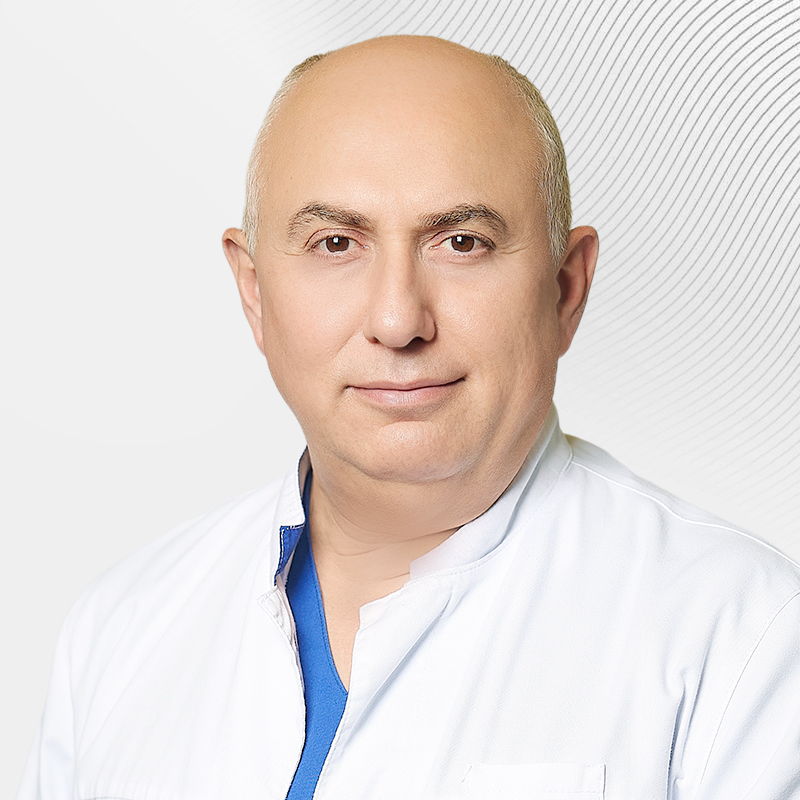Phacoemulsification of cataracts of the eye
Phacoemulsification is the gold standard of cataract surgery. Minimally invasive surgery is performed quickly, the risk of complications is minimal, and the patient can go home immediately after the intervention. In the EMC ophthalmology clinic, the skill of surgeons makes it possible not only to restore the visual acuity that the patient had before the development of cataracts, but even to improve it.
What is cataract phacoemulsification
Cataract phacoemulsification with IOL implantation is a modern surgical procedure that is used to treat cataracts. This method uses ultrasound to destroy and then remove the clouded lens. Then an intraocular lens is inserted into the lens capsule, which restores visual clarity.
Indications and contraindications
An indication for phacoemulsification is cataract at all stages of the disease. The key factor is visual impairment, which prevents the patient from leading a normal lifestyle.
Like any surgical procedure, cataract phacoemulsification with IOL implantation has a number of contraindications. The operation is not recommended in the following cases:
-
inflammatory diseases of the eye;
-
uncompensated glaucoma.
Contraindications may also include systemic diseases and conditions that increase the risk of complications during surgery. For example, heart or lung diseases, decompensated diabetes mellitus, and chronic diseases in the acute stage.
Preparing for the operation
Preparation for surgery begins with a complete medical examination, including a general blood test, coagulogram, ECG and other studies. This is necessary to assess the patient's general health and identify possible contraindications to surgery.
An important stage of preparation is to consult an ophthalmologist, who will conduct a detailed eye examination and determine the severity of the cataract.
Before surgery, it is recommended to temporarily stop taking medications that may affect the blood coagulation process. On the day of the procedure, the patient must come on an empty stomach.
How the operation is performed
Cataract phacoemulsification with IOL implantation is performed in several stages:
- Local anesthesia of the eye is performed.
- A special phacoemulsifier is inserted through a small incision measuring 2.2 mm. Under the action of ultrasonic waves, the clouded lens of the eye collapses to the state of an emulsion.
- With the help of the irrigation-aspiration system, the remnants of the lens are removed from the eye.
- A pre-selected intraocular lens is placed in the lens bag. No suturing is required, the micro-incision is self-sealing.
Intraocular lenses that are used during surgery come in different types: monofocal, multifocal, and toric. They vary in both characteristics and price. The doctor selects the IOL for each patient individually.
The patient is admitted to the day hospital 2 hours before the operation. The operation is painless for the patient. The whole procedure takes 15-20 minutes. The patient can leave the clinic immediately after the operation is completed.
Postoperative recovery
The recovery period after cataract phacoemulsification usually takes from a couple of days to several weeks. During the first days, the patient may experience some unpleasant sensation in the eye, but this is normal and goes away in 2-3 days.
After surgery, it is important to follow a number of recommendations:
-
avoid physical activity;
-
Do not rub your eye, do not press on it;
-
do not sleep on the side of the operated eye;
-
Do not be exposed to bright light (use sunglasses);
-
avoid high temperatures: saunas, steam baths, hot baths.
The patient is prescribed a course of drug therapy, including antibiotics and anti-inflammatory drops. It is important to strictly follow the medication regimen. Regular visits to the doctor during the postoperative period are required to monitor the healing process.
Complete restoration of vision usually occurs within 1-2 weeks. A month after the operation, the patient can return to a normal lifestyle.
Possible complications
Despite the fact that phacoemulsification surgery is considered one of the safest, like any surgical procedure, it can cause certain complications:
-
corneal edema;
-
increased intraocular pressure;
-
Hemophthalmos (vitreous hemorrhage);
-
retinal detachment;
-
displacement of the intraocular lens.
The risk of complications is less than 1% with proper preparation for surgery and strict adherence to the recommendations of the ophthalmologist in the postoperative period.
Advantages of cataract phacoemulsification in the EMC clinic
At the EMC Ophthalmology Clinic, we work with even the most complex pathologies. A multidisciplinary approach involving specialists from different fields helps us restore vision to thousands of patients. Here are the benefits of treatment at the EMC:
-
Expert equipment. We use the most advanced combined phaco-vitreo machine "Constellation Vision System" from Alcon, only disposable knives, highly purified viscoelastic solutions that protect the cornea.
-
A wide range of IOLs. We use the most modern American, German, English or Swiss artificial lenses at various prices.
-
Operations under anesthesia (sedation) for patients with serious somatic diseases who are usually denied treatment under local anesthesia.
-
Round-the-clock emergency ophthalmological care for adults and children.
Our specialists have international experience, including working in Europe. Let us apply this knowledge to your health and well-being. Make an appointment at our clinic today to get an ophthalmologist's consultation and find out the cost of cataract treatment.
Question-answer
At what stage of cataract is lens replacement surgery performed?
The phacoemulsification technique is usually used in the late stages of cataracts, when the disease begins to seriously affect vision.
What are the lenses for cataract surgery?
There are various types of artificial lenses, from simple spherical and aspherical lenses to lenses that allow you to read without glasses (multifocals) and lenses that correct astigmatism (toric lenses). Each of these lenses differs in cost, has its own features and advantages, so the right type is selected individually for the patient.
Is it possible to go blind after lens replacement surgery?
Modern cataract removal technologies and highly qualified surgeons make the possibility of blindness extremely unlikely. However, any surgery carries certain risks that should be discussed with your doctor.
Doctors



.jpg)

.jpg)





- Performs vision correction surgery
- He graduated from the MNTC "Eye Microsurgery" named after S.N.Fedorov. He has interned in various foreign clinics
- He worked in foreign clinics: Moorfields Eye Hospital,Heidelberg University Hospital,Centre Hospitalier Universitaire de Bordeaux




